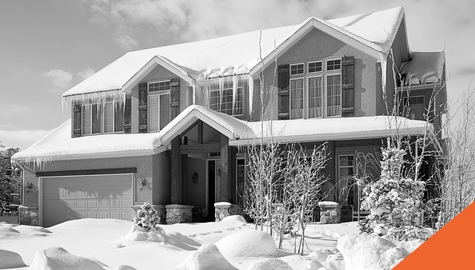The Ultimate Guide to Winter Driving
Monday, 23 December 2024
Whether you have years of experience behind the wheel or just recently obtained your licence, winter driving can be a daunting task. However, with the right preparation and knowledge, you can navigate the roads this season safely. This guide will give you all the winter safety tips and tricks you need to drive with confidence this time of the year. So strap in, and let's get started!
Tips to Follow Before You Hit The Road
Know Your Vehicle
Understanding your vehicle is the first step toward successful winter driving. Familiarize yourself with key components such as windshield wipers, headlights, and antifreeze levels. A quick pre-drive inspection can help prevent headaches later.
Be Prepared
Winter can be unpredictable, bringing a variety of obstacles and hazards to the roads. From heavy snowfall and icy patches to freezing rain and whiteout conditions, the weather can change rapidly and make driving a challenge. With that said, it's essential to have a well-stocked emergency kit in your car at all times. When creating your kit, consider items like:
- A first-aid kit
- Phone charger and power bank
- A flashlight and batteries
- Blankets
- A shovel
- Ice scrapers
- Jumper cables
- Road flares
- Water and non-perishable snacks
Preparing for winter driving also means being aware of the current weather conditions. Before you hit the road, make sure you dress appropriately to stay warm and plan your route accordingly to avoid getting stuck on unplowed roads. It's also important to clear your car of ice and snow so you can have a better view of your surroundings.
Keeping some sand or kitty litter in your trunk is another great idea. If you are stuck on the road, scattering these around your tires can create a grittier surface that helps the tires grip better. This makes it easier to regain momentum and get your vehicle moving again - especially when trying to drive out of slippery or slushy spots.
The Importance of Winter Tires
One of the most common ways that people prepare their vehicles for winter is by installing winter tires. Also known as snow tires, these specialized tires are designed to provide better traction and handling in cold weather and on icy roads.
Reasons to Make The Switch to Winter Tires
Switching to winter tires offers several key benefits that make them a smart choice for cold-weather driving.
First and foremost, they provide improved safety by offering better traction and handling compared to regular tires. This enhanced grip helps you maintain control in challenging conditions such as snow, ice, or slush, reducing the likelihood of accidents and the need to file an auto insurance claim.
Not only do winter tires enhance road safety, but they can also help you save money by lowering your insurance rates. Many car insurance providers offer discounts to drivers who use winter tires, rewarding the added safety precautions.
To maximize these benefits, be sure to install your winter tires early and stay prepared for whatever the season brings.
Simple but Important Winter Driving Tips
Take It Slow
One of the most important tips for winter driving is to take it slow. Leave earlier for your destination to ensure you have plenty of time to arrive safely. Be extra cautious when braking and turning, as icy roads can make these actions more challenging. Accelerate and decelerate slowly, and avoid sudden, jerky maneuvers to maintain better control of your vehicle. Finally, always obey the posted speed limits - even if they seem low to you. Remember, slow and steady wins the race!
Be Extra Cautious
Accelerate and decelerate slowly, and avoid sudden, jerky maneuvers. You'll also want to be extra cautious when interacting with other vehicles on the road. Turn your lights on, give extra space between you and the vehicle in front of you for braking, and keep a safe distance behind snow plows.
If you find yourself in a white-out, sleet, freezing rain, or hail storm, the best thing to do is pull over and wait it out. If you start to skid or slip on the road, don't panic. Steer into the skid, and gently pump your brakes until you regain control.
Do Not Panic
Staying calm is key to handling challenging situations. If you start skidding while driving, don’t panic. Ease your foot off the gas pedal and focus on regaining control. If your car has an anti-lock braking system (ABS), brake firmly and evenly—you’ll feel the brake pedal pulsing, which is a sign the system is working correctly. For vehicles without ABS, gently pump the brakes. When sliding on a slippery surface, steer into the skid. For example, if the rear of your car slides to the right, turn your steering wheel to the right.
If you encounter severe weather conditions like a white-out, sleet, or freezing rain, the safest option is to pull over and wait it out. Trying to push through dangerous conditions can increase your risk of losing control. Staying calm and taking these precautions can make a big difference in your safety during winter driving.
Be Aware of Other Drivers
Driving safely in winter means being aware of not just your own actions but also the habits of other drivers on the road. Pay close attention to how other vehicles are moving and be prepared to react accordingly. Defensive driving is key to staying safe. Remember to turn on your lights for better visibility, and always give extra space between you and the vehicle in front of you to allow for longer braking distances on slippery roads. When driving behind snow plows, keep a safe distance to avoid flying snow and debris.
Additionally, follow the 7-second rule: if you see an accident or hazard ahead, it will take about 1.5 seconds for you to react and another 1.5 seconds for your car to brake. This means you should keep at least 3 seconds of distance from the vehicle in front of you under normal conditions. Depending on road conditions, even more space may be necessary. By leaving extra room and giving yourself at least 7 seconds to react to the situation, the roads become safer for everyone.
Quick Winter Driving Tips to Share With Your Loved Ones
- Don't use cruise control: While it may be convenient, it's best to disable cruise control when driving on icy or slippery roads. This allows you to maintain better control over your speed and reaction times, helping you adjust quickly to changing conditions or unexpected hazards on the road.
- Beware of black ice: This thin layer of ice can be hard to see. Use extra caution when driving in low-light conditions or during early morning and evening hours when the temperature tends to drop, making black ice more likely to form. Always reduce your speed and be vigilant for areas that may appear wet or reflective, as these can be signs of icy patches.
- Come to a complete stop: If your vehicle is spinning out or has gotten stuck, make sure you come to a complete stop before you attempt to drive again. This will allow you to assess the traction on the road and ensure your tires are properly aligned in the right direction.
- Avoid accelerating uphill: Trying to speed up when driving uphill can cause your wheels to spin. Instead, keep a steady pace and avoid attempting to power your way up the incline.
- Keep moving if possible: If you can safely pull over to the side of the road or find a nearby parking lot, do so. However, if that's not an option, it's better to continue driving until you find a safe place to stop.
Stay Protected on the Roads this Winter With BIG
The winter can be a tough time to get around, especially if you're not used to driving in snow and ice. However, by taking proper safety measures, you can remain confident all season long. For added peace of mind on the roads, contact a BIG broker. Whether you are a current client looking to update your policy or are a new client who wants to review car insurance quotes, our team has you covered and can help you find the best car insurance for your needs.



